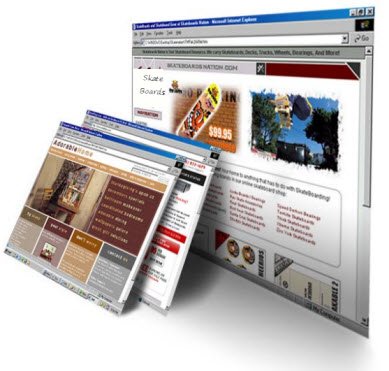Imagine this: You’re in the market for a new tennis racket. A friend tells you about a local tennis equipment store. You enter the store, but there are no rackets to be seen. In fact, there is no visible merchandise whatsoever.
Instead, there are some vague signs pointing you to cabinets you must dig through to find what you want. You need some help deciding what racket to buy but there’s only one employee working. She’s behind 3 feet of sound-proof glass and can’t hear your plea for help.
This sounds like the most poorly run store in the world, doesn’t it? The sad news is that many small business websites give the online equivalent of this experience. Having a better online presence will increase sales and foster better connections with customers.
 Here are the three ways you can improve your small business website.
Here are the three ways you can improve your small business website.
1. Better product navigation and “findability”: If you ran a brick-and-mortar store, you wouldn’t conceal all the products in hard-to-find places, would you? It sounds elementary, but that’s what many small business websites do. Your product navigation should be simple, direct, and be tuned to the customer’s thought process – it should speak the customer’s language.
For example, if you sell cell phone accessories, put yourself in the buyer’s shoes. When buying a cell phone accessory, the first thing I’m going to look for is a set of products that fit my phone. In this situation, a key website navigation element would be the ability to filter or view products by cell phone brand and model. Making the right product or service easier to find will help to increase sales by helping them find what they need easily and quickly.
2. Post content & resources to provide value and credibility: Recently, I’ve been looking to take up kayaking (I think it looks relaxing). Naturally, I started by looking for kayak rental shops in my area. As someone who is completely new to the activity, I need a lot of help beyond just renting the kayak. What about understanding all the equipment I’ll need? What about safety measures, and lessons? What about kayaking spots for a beginner in my area?
I found a handful of local companies willing to rent me a kayak, but only one of the websites provided tons of informative, free content. This particular site provided a map of local spots and beginners equipment checklists. The wealth of resources makes me trust them as a thought leader, and it makes me comfortable with purchasing from them. Providing great content has strong SEO benefits, as well.
 3. Make communication easy and accessible: If you were at a small business conference, and you met a potential customer, you’d make some arrangement to connect. An exchange of email addresses, phone numbers, or LinkedIn URLs may be in order. Yet many small business websites ignore this core part of relationship building.
3. Make communication easy and accessible: If you were at a small business conference, and you met a potential customer, you’d make some arrangement to connect. An exchange of email addresses, phone numbers, or LinkedIn URLs may be in order. Yet many small business websites ignore this core part of relationship building.
You need to offer an easy way for people to get in touch and stay in touch. Choose one phone number to publish, and make it obviously visible on every page of your site – the sidebar can be a good spot for this. Consider click-to-call capability or call-back forms too.
If you’ve got great products, easy navigation, and valuable content and resources, people will probably want to stay up-to-date with you via email. Make signing up for your email stream easy by providing a simple form.
Having a website for your small business is great – having an easily navigated, content-rich website that makes customer communication simple is even better.
